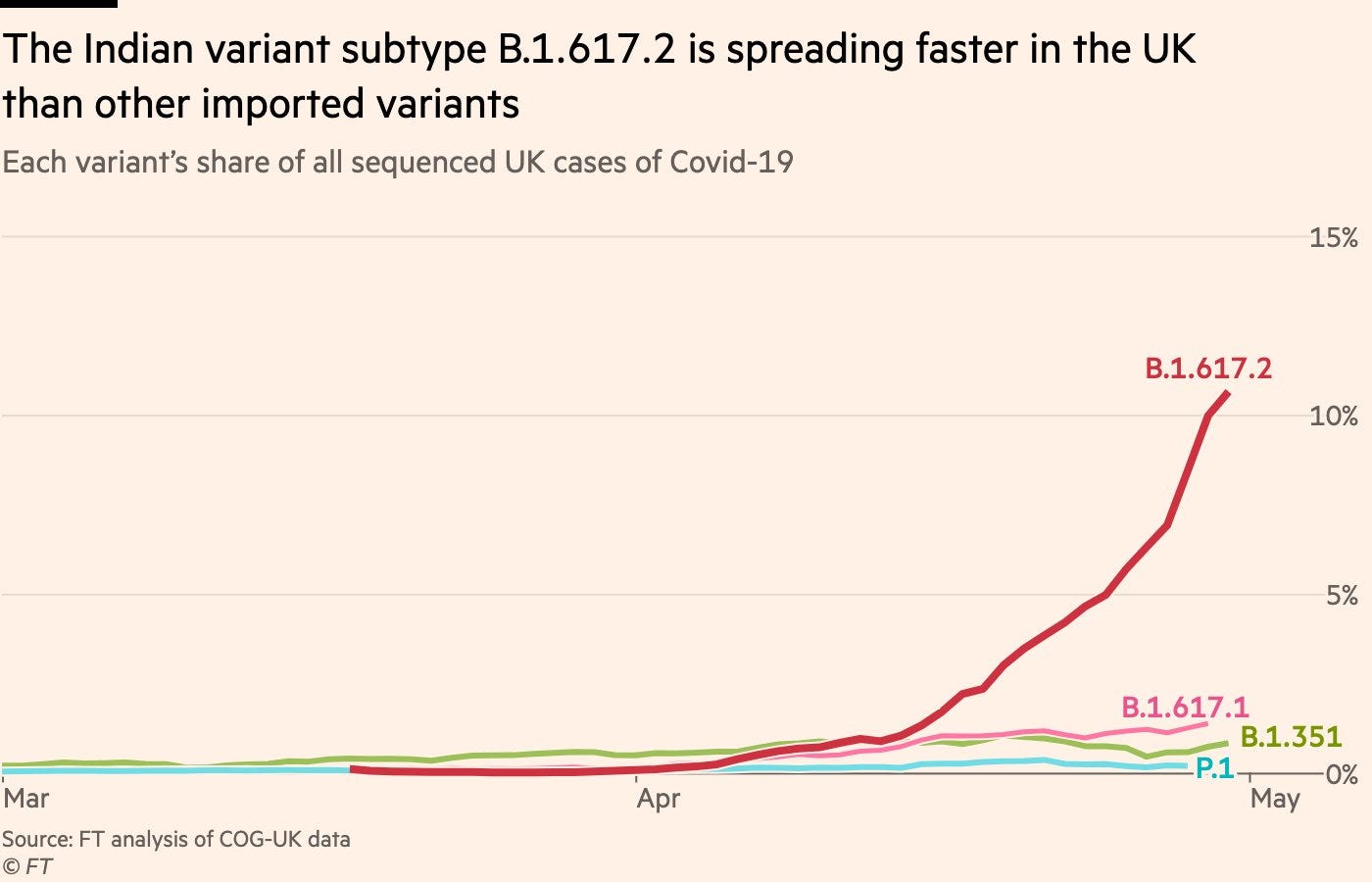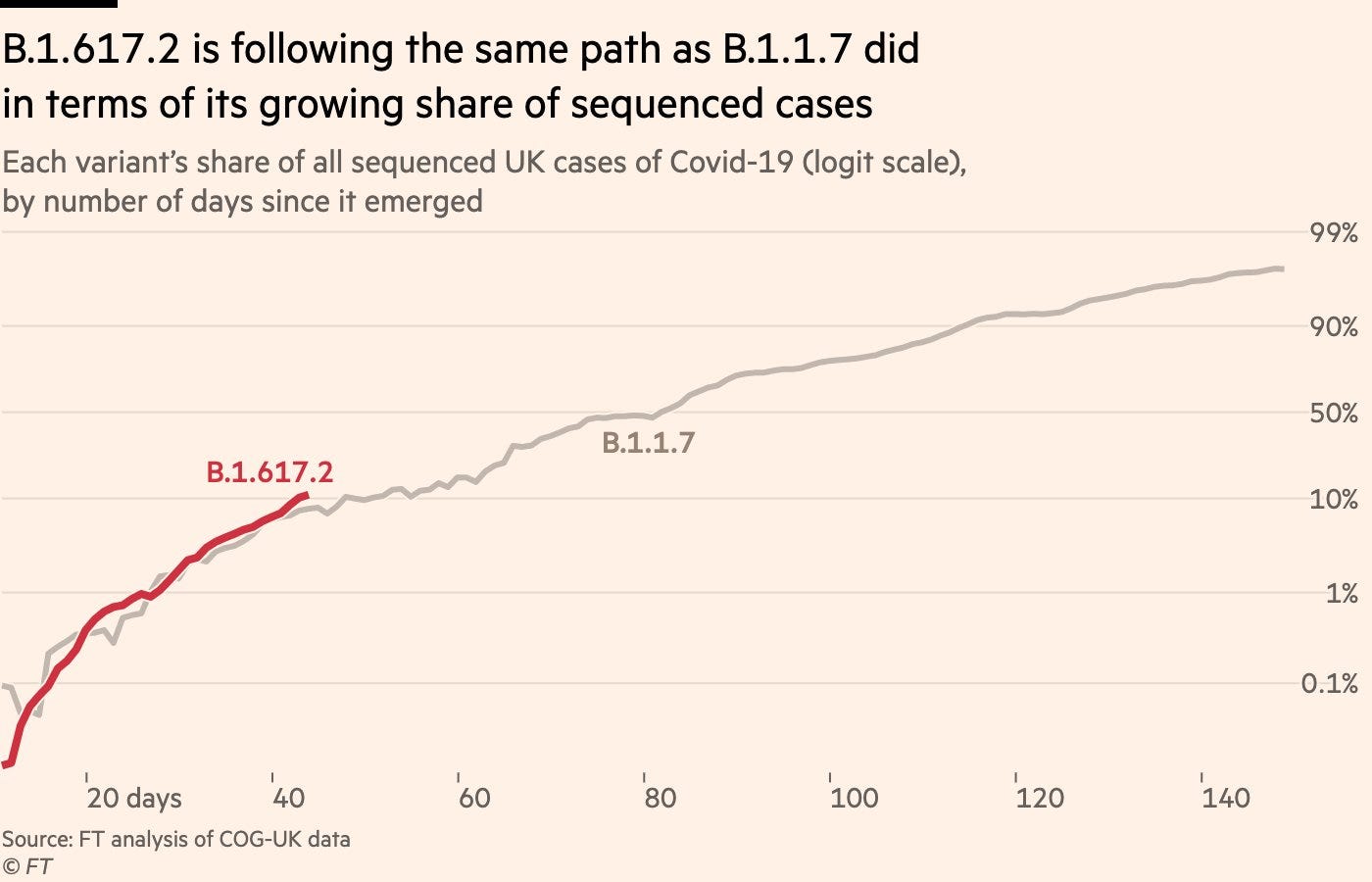Good news for B.1.617 (India variant)
I promised myself (and my husband) to not work this weekend, but this is too good not to quickly share…
There is some amazing news
Like I explained before, B.1.617 (variant first discovered in India) has two concerning mutations which appear together for the first time (this is why mass media have given it the nickname “double mutant”). One key question, though, is… do these mutations together give an even scarier response than by themselves?
The answer is NO!
The Gupta Lab in Cambridge posted some great preliminary results (i.e. not published or peer reviewed) on their Twitter handle.
This figure shows the antibody response (and more specifically how many antibodies you would produce) against certain mutations. Pay attention to the panel on the right.
BLUE is the wild type (meaning the virus that’s been circulating before it mutated to be concerning). This is our “baseline” to use as a comparison group.
RED is the scary mutation on the S. Africa variant and Brazil variant that seems to be escaping some vaccines (it has, on average, a 10-fold decrease of antibody neutralization compared to BLUE)
GREEN is one of the two concerning mutations on the India variant. It’s a sibling to the RED mutation, so we were a bit concerned about it. But, it doesn’t seem to be AS bad as the RED (6 fold decrease in antibody neutralization)
PURPLE is the second concerning mutation on the India variant. However, from this study, we now know it’s no different than BLUE. Which is good news.
And then, this is the important one, the YELLOW is the two mutations together (GREEN + PURPLE). Together, YELLOW is significantly worse (a 4 fold decrease in antibody neutralization compared to BLUE). But, and importantly, GREEN and PURPLE do not interact with each other to make an even worse reaction. They do NOT confer substantial antibody invasion.
There is a little bit of bad news
The B.1.617 variant seems to have already changed again (called B.1.617.2; a sub-lineage). When this virus jumped from one person to another, it mutated and dropped the GREEN mutation (probably because it isn’t a “double mutant” and this extra mutation doesn’t give the virus a “one up” on us humans).
However, this sub-lineage seems to be highly transmissible. It’s on the same trajectory as B.1.1.7 (UK variant). So, many countries, like the UK, are changing this variant classification from a Variant of Interest to a Variant of Concern. We need to keep on eye on this one in places that have NOT had great vaccination campaigns.
Bottom Line: Good news for this weekend. We can stop using the term “Double Mutant”. And, this is reassuring because it means our vaccinations likely work. Vaccination in India (and elsewhere) will contribute to control transmission and the severe effects of COVID19.
Love, YLE







